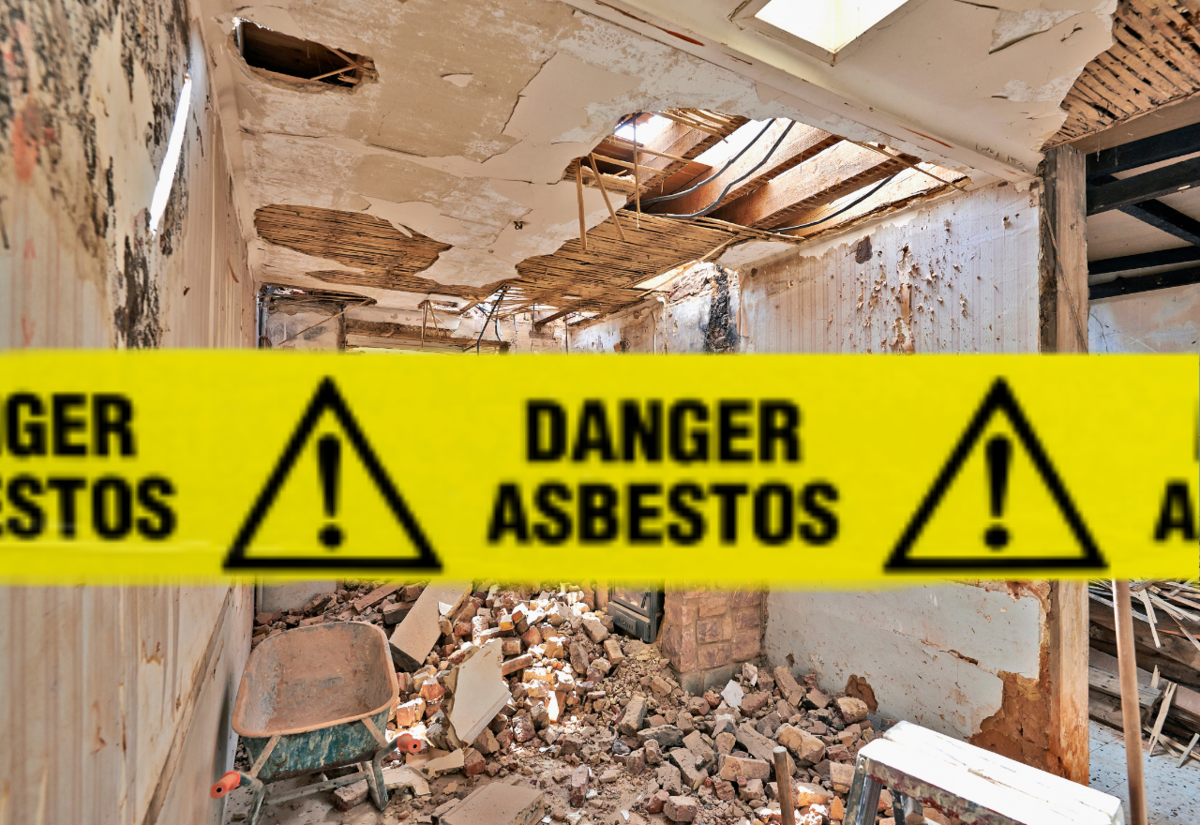Attitudes to asbestos put regional residents at risk
Abby Seaman
04 February 2022, 8:20 PM
 Fifty per cent of people in NSW do not know how to deal with asbestos according to a new report. Photo supplied
Fifty per cent of people in NSW do not know how to deal with asbestos according to a new report. Photo suppliedA new report has found that residents in regional NSW are slightly less likely to encounter asbestos than those who live in the city but could be at higher risk due a 'gung-ho' attitude to home maintenance.
Recent research commissioned by the NSW Environment Protection Authority (EPA) has raised concerns about the dangers of asbestos, in particular a lack of knowledge around where asbestos might be, how to safely manage it and where to dispose of it legally.
In the survey of 2000 people in NSW, one in four people admitted to dumping asbestos on the work site or in a kerbside bin.
In regional areas, the survey found the asbestos risk may be slightly lower due to fewer "relevant properties" (43% compared to 48% in Greater Sydney) and residents being less likely to undertake major renovations than those in metropolitan areas, due to lower rates of home ownership.
However it seems those in the bush have much stronger DIY tendencies when it comes to home maintenance and improvements overall and that this could put us in harm's way.
We are much more likely to do most or all of the work ourselves (61%, compared to 45%) and much less likely to leave it to the professionals (14%, compared to 24%).
The report also found that regional renovators "may be particularly confident in their knowledge and abilities when it comes to asbestos, whether or not they actually possess relevant knowledge or skills" compared to their city counterparts.
As well as being confident in our own D-I-Y skills, residents out west are also more likely to have a social network of those who have prior experience in dealing with asbestos, and a considerate attitude to helping each other out.
Paul Ryeman, Director of Planning and Environment Service at Cobar Shire Council says he believes that the community is alert about the asbestos removal process.
“The community is pretty aware of it and when we get enquires about how it needs to be managed, we give advice to people relative to the facts of the jobs," he said.
“If we have enquiries, we talk to people and guide them as to what their obligations are and what the rules are. The system is regulated predominately by the State Government.
“We've got some information on our website, there some information about general education for the community. There also Safe Work, they have all that information as well,” Mr Ryeman said.
Just how many people follow the recommended steps is up for discussion, according to the survey.
Asbestos specialists in the research also mentioned the variation in disposal costs at different regional waste facilities and pointed out that, in some locations, this was perceived to present a large barrier to disposal at that site.
The report noted that, even in Dubbo, where the licensed waste facility is very close to town and disposal costs are (according to asbestos specialists) much lower than in many metro areas, people encountering asbestos on relevant properties still reported improper disposal.
EPA Unit Head Education and Programs, Sharon Owens said that the report is critical to those considering DIY projects or renovations.
“If homeowners don’t think about asbestos when planning or doing work, they can get a nasty surprise that puts their family and friends at risk of disease.”
“Asbestos is dangerous, and the risk of disease increases with exposure. This research makes it very clear how important educating the community about asbestos is all year round, not just during Asbestos Awareness Week,” said Ms Owens.
The report finding are a part of a larger campaign coming later this year that aims to encourage planning and preparation for trade workers and homeowners.
Throughout the nation one in three homes possibly contain asbestos and 50 per cent of people do not know how to deal or dispose of the material safely.
Asbestos was banned in Australia in 2003. Homes built before the 1990s are most likely to contains asbestos and are often renovated or demolished, and homes constructed from 1990 to 2004 may contain asbestos.
Asbestos-containing materials remain an ongoing risk to the Australian community and environment as more than 4,000 people die each year from asbestos-related disease, including several types of cancer.
Before beginning renovations visit asbestos.nsw.gov.au or contact your local council for advice